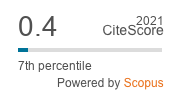Two exquisite hemipteran galls of India with notes on the physiology of gall induction by Sternorrhyncha
DOI:
https://doi.org/10.33307/entomon.v41i4.212Keywords:
Peninsular India, Indo-Gangetic Plains, Mangalorea hopeae, Apsylla cistellata, Contarinia manii, dynamics of interactionsAbstract
The Indian subcontinent is rich with gall-inducing insects. The varieties of galls they induce offer bountiful opportunities to explain the dynamics of insect-plant interactions. Close to 90% of gall-inducing insects across the world are known to be specific to certain plants and such specialist behaviour offers them for use as ideal models to explain and characterize insect-plant relationships, which bear long-term advantages in managing insects that live and feed on economically important plants. In such a context, I illustrate in this paper, the intimacy of relationships between two gall-inducing Hemiptera (Apsylla cistellata tied to Mangifera indica and Mangalorea hopeae tied to Hopea ponga), which are native to the Indian subcontinent. In this article I emphasize that studying the biology of gall-inducing insects unequivocally demands a clear understanding of the stress and reparative physiology of the plant as well, further to that of the feeding biology of the inducing insect. Since all known gall-inducing insects (Hymenoptera excepted) induce galls by feeding action, I have explained the vitality of knowing about mouth parts, salivary secretions, and the mechanisms that arise in plants consequent to insect feeding with regard to the Hemiptera. My plea is that with the vast variety of various gall-inducing insects, we in India have a large canvas to paint the details of the physiology and metabolomics involved in insect-plant interactions clearly, because these insects are highly specialized in selecting their hosts, and also because these insects live embedded within plant tissues for certain period of time. In an ecological context, these insects are more easily amenable to monitor in field contexts than other free-living insects.
Downloads
Published
How to Cite
Issue
Section
License
Copyright (c) 2017 ENTOMON

This work is licensed under a Creative Commons Attribution-ShareAlike 4.0 International License.


